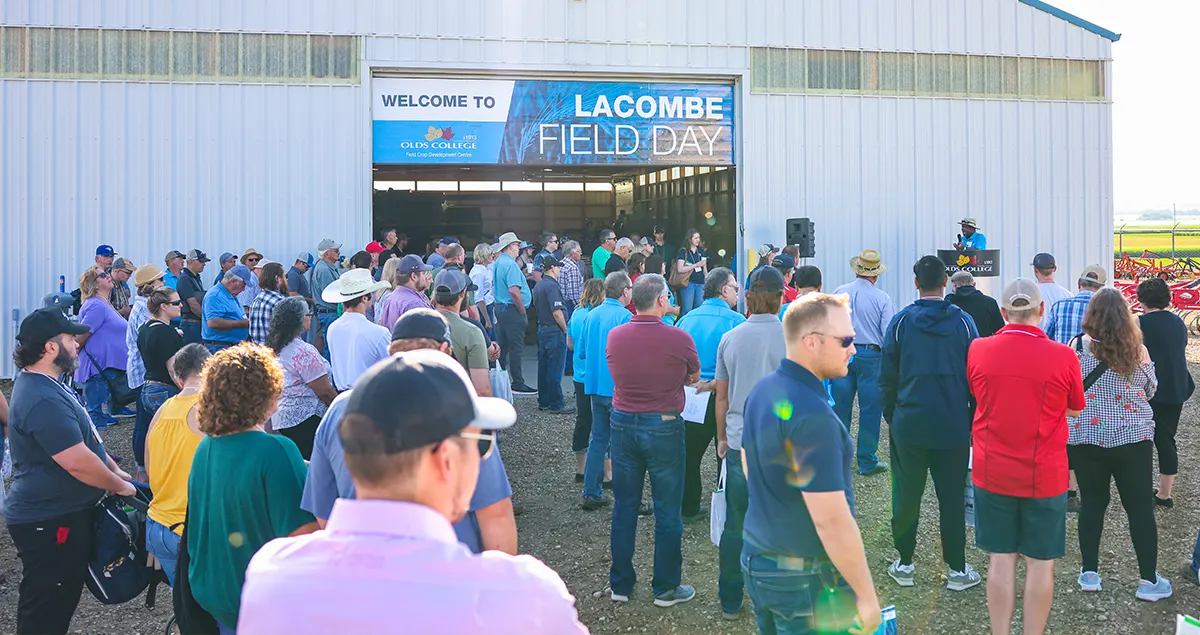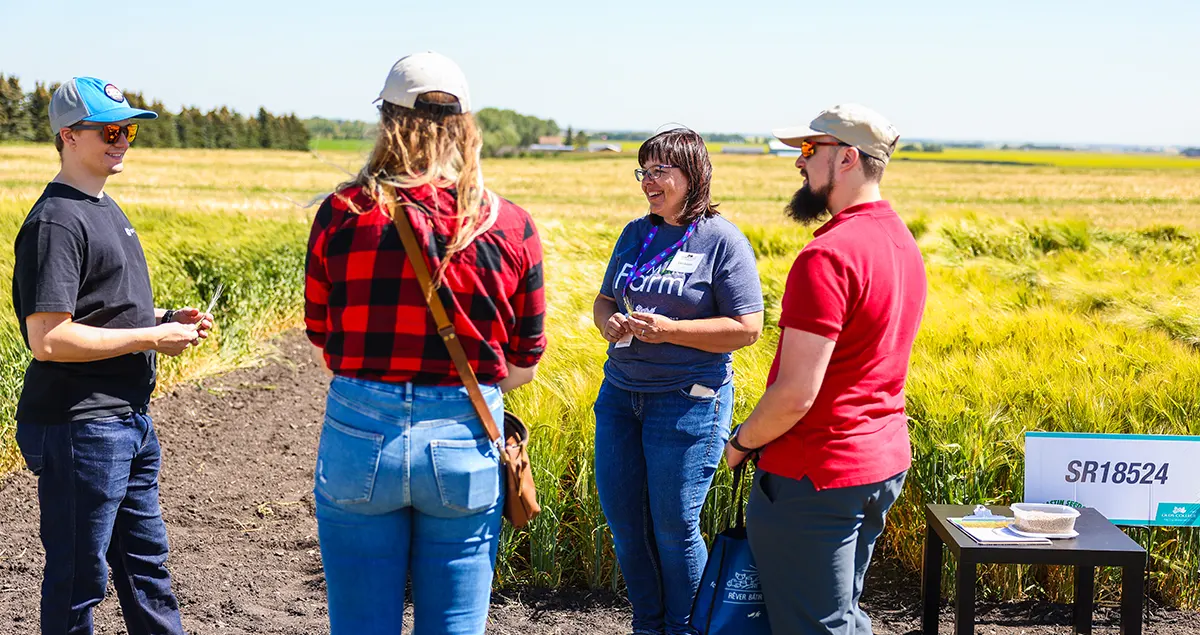Lacombe Field Day
 On July 27, FCDC hosted its annual Lacombe Field Day with the largest attendance to date along with a hot, sunny day. Presented by Alberta Barley, over 240 people were in attendance and learned about the amazing research and industry collaboration that takes place at FCDC. Guests learned about released varieties of malting barley, feed and forage barley, triticale and the up-and-coming varieties in addition to the quality, biotech and pathology programs. Everyone enjoyed lunch and a can of FCDC’s feature beer of the year, Brew Ha-ha, then it was back to the field. In the afternoon, there were three demonstration stations set up including soil sampling from both the Olds College Centre for Innovation Smart Ag research team and Central Alberta Co-op. The lab trailer was set up to show FCDC's mobile weigh station, as well as a station that demonstrated crossing cereals to breed new varieties. FCDC received a lot of great feedback, and is excited to plan for the 2023 FCDC Field Day!
On July 27, FCDC hosted its annual Lacombe Field Day with the largest attendance to date along with a hot, sunny day. Presented by Alberta Barley, over 240 people were in attendance and learned about the amazing research and industry collaboration that takes place at FCDC. Guests learned about released varieties of malting barley, feed and forage barley, triticale and the up-and-coming varieties in addition to the quality, biotech and pathology programs. Everyone enjoyed lunch and a can of FCDC’s feature beer of the year, Brew Ha-ha, then it was back to the field. In the afternoon, there were three demonstration stations set up including soil sampling from both the Olds College Centre for Innovation Smart Ag research team and Central Alberta Co-op. The lab trailer was set up to show FCDC's mobile weigh station, as well as a station that demonstrated crossing cereals to breed new varieties. FCDC received a lot of great feedback, and is excited to plan for the 2023 FCDC Field Day!
AgSmart
 On August 9 and 10, FCDC was pleased to be a part of AgSmart at Olds College Agriculture & Technology, and have the opportunity to highlight program achievements to the producers and industry groups in attendance. FCDC had a display setup, highlighted the newest crop varieties, and handed out samples of its “Brew Ha-ha” feature beer which was made from the latest malt barley variety AB BrewNet and brewed at the Olds College Brewery. FCDC also had larger demonstration plots highlighting eight crop varieties that were recently commercialized. Lots of people stopped by the plots to ask questions, and staff was on hand to give presentations and hand out information. FCDC also hosted four educational sessions on its pathology, feed and forage, triticale and malting programs. FCDC participated in the Smart Farm bus tours to present its research near the FCDC plots on campus.
On August 9 and 10, FCDC was pleased to be a part of AgSmart at Olds College Agriculture & Technology, and have the opportunity to highlight program achievements to the producers and industry groups in attendance. FCDC had a display setup, highlighted the newest crop varieties, and handed out samples of its “Brew Ha-ha” feature beer which was made from the latest malt barley variety AB BrewNet and brewed at the Olds College Brewery. FCDC also had larger demonstration plots highlighting eight crop varieties that were recently commercialized. Lots of people stopped by the plots to ask questions, and staff was on hand to give presentations and hand out information. FCDC also hosted four educational sessions on its pathology, feed and forage, triticale and malting programs. FCDC participated in the Smart Farm bus tours to present its research near the FCDC plots on campus.